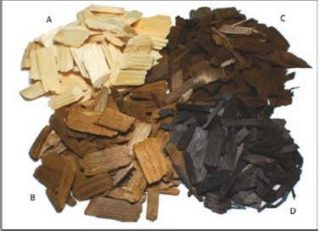-
Co-utilisation of biomass with fossil fuels in iron and steel production
Date posted:
-
-
-
Post Author
Greg Kelsall
-
In a study carried out by researchers at Luleå University of Technology and covered recently by Azo Materials, researchers evaluated the recent technical developments in the use of biomass in various steel and iron-making processes, as well as their potential to reduce fossil CO2 emissions.
The iron and steel industries are significant sectors that have a direct impact on society, economic growth, stability, and national security. Fossil fuels are the primary reducing agents and source of heat in the production of iron and steel, accounting for 20% of industrial energy use and for around 2.8Gt/y of global CO2 emissions in 2017, a number which continues to increase.
Due to the recent increases in energy prices, together with national commitments to reduce CO2 emissions, the reduction of gaseous emissions and energy consumption are major priorities for iron and steel production. Iron making processes have recently undergone significant adjustments and improvements in order to minimise energy consumption and CO2 emissions. However, whilst reductions in energy consumption within iron steel production has been achieved, this has been more than offset by an increase in total production, resulting in an overall increase in CO2 emissions.
In order to reduce CO2 emissions in the iron and steel sector, more focus has recently been dedicated to utilising renewable biomass as a reducing source as well as a source of heating, to replace fossil fuels. Partially substituting fossil fuels with renewable biomass, including thermally treated biomass in steel-making processes, is one approach that could be implemented in the short to medium-term, with other technical solutions reported recently by the ICSC (International Centre for Sustainable Carbon). However, several technical and economic barriers are faced in the utilisation of biomass in the steel and iron industries.

The study carried out by researchers at Luleå University of Technology investigated the use of biomass in iron and steel production. Researchers observed that biomass addition to coal blends was limited to 5-10% (wt), attributed to the addition of biomass to coal blends affecting the coke’s quality by lowering its strength and increasing its reactivity. Particle size, density, and volatile content are defined as important parameters to be considered when introducing biomass to a coal blend.
Some studies showed that the major fuel utilised in the sintering process was coke breeze, which accounted for 10% of the total CO2 emissions in the integrated steel factories. The researchers also observed the potential of pyrolysed charcoal to partially replace coke breeze in the sintering procedure with lower SOx and NOx emissions. The replacement ratio was found to be enhanced by increasing the size, density, and reactivity of biochar particles.
The team also noted the introduction of biomass into the blast furnace was shown through the briquetting method as well as through tuyeres. It was observed that injection of biomass products into the blast furnace minimised the consumption of coal/coke and reduced CO2 emissions. Porous structure, low ash content, low sulphur content, and high hydrogen concentration were some of the benefits of biomass.
It was also shown that the use of biomass instead of coking coal in steel production resulted in a decrease of 10–12% of CO2 emissions from steel production. Studies on the replacement of injected fossil fuels with neutral carbon carrying materials revealed that biomass was a viable alternative due to its low sulphur and phosphorus content.
